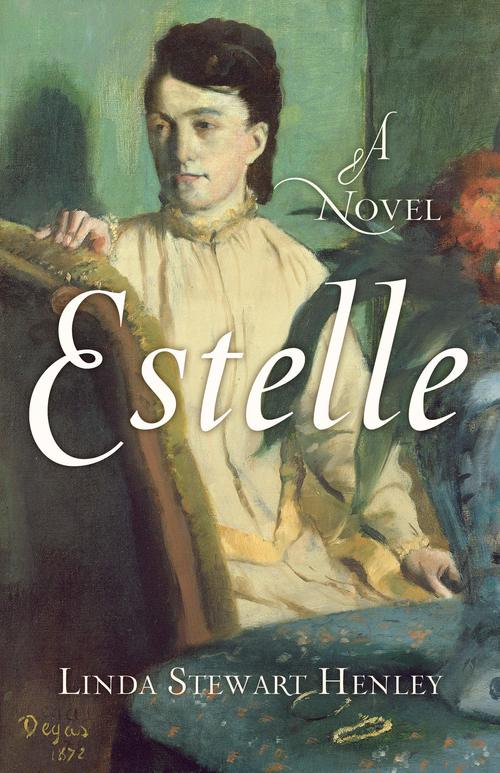Research for writing a novel is like opening a message in a bottle. Of course, all the material isn’t nicely folded up containing everything you wish to know about the subject, but each new piece is a surprise nugget adding to the richness of your story.
I became interested in writing about Edgar Degas after I bought a travel guide to New Orleans as I was considering re-visiting the city. I had attended college there and had only returned once in the intervening years. I needed to know about places to stay and which favorite places were still around. I’d no idea while I was in college that Degas had spent five months visiting his Creole relatives there in 1872-73, and I was intrigued by the discovery. From there I began my research.
Much has been written about Degas the artist and some historical novels have been written about his life, but I couldn’t find any that related to his time in New Orleans when he was thirty-eight and not yet famous. So I had the good start for a story: you need a protagonist or main character who’s in trouble, someone who wants something badly. With historical fiction writer’s license, I decided he really wanted to paint but was discouraged by his lack of success so far. This probably wasn’t far from the truth. As I learned more, I found that his contemporaries, artists like Manet and Renoir, had already achieved more recognition in France.
When he went to New Orleans to visit family, he started a number of family portraits, most of which are relatively unknown, until he finally produced his masterpiece, A Cotton Office in New Orleans, a painting of his family’s cotton business. This work aroused great interest when he returned to France, was shown at the second Impressionist Exhibition in Paris in 1876, and many critics think it assured his reputation.

When writing a historical novel, it’s obviously a good idea to include at least some history. Everyone knows much of the story is a product of the writer’s imagination, and readers often want to know how much is true. For this reason, I include notes at the end of Estelle highlighting some of Degas’s actual words. There’s also an epilogue giving some interesting facts about the family members after the story ends. As is often the case, truth is stranger than fiction, and some of the truths, in this case, are quite shocking.
In depicting Degas, challenges emerged for me right away. He has a reputation as a difficult personality. Brilliant and talented, but a misogynist and antisemitic, it would have been hard to present a different view of his character. But I learned through reading several scholarly works that during his time in New Orleans with family, a softer side emerged. He certainly felt sympathy for his cousin and sister-in-law Estelle, who was almost blind. He had vision problems himself and found the strong light in New Orleans unconducive to Plein air painting. His mother, a French Creole, who died in Paris when he was thirteen, was born in New Orleans. He was devoted to his family and kept all the portraits he is known to have completed in New Orleans in his studio until he died. Degas stayed at her brother’s (his uncle’s) house while he visited. This former mansion, now only half the size, and known as the Degas House, is now a Bed and Breakfast.
Estelle is one of two protagonists in the story, and we learn about the artist from her limited perspective. Intertwined with the 19th-century storyline is the one of Anne Gautier, who lives a century later. The 20th-century part of the story is pure fiction, but through Anne and a journal she discovers that belonged to a relative, we learn about Degas and his family in 1872 New Orleans.
ESTELLE by Linda Stewart Henley
When Edgar Degas visits his French Creole relatives in New Orleans from 1872 to ’73, Estelle, his cousin and sister-in-law, encourages the artist—who has not yet achieved recognition and struggles to find inspiration—to paint portraits of their family members.
In 1970, Anne Gautier, a young artist, finds connections between her ancestors and Degas while renovating the New Orleans house she has inherited. When Anne finds two identical portraits of Estelle, she discovers disturbing truths that change her life as she searches for meaningful artistic expression—just as Degas did one hundred years earlier.
A gripping historical novel told by two women living a century apart, Estelle combines mystery, family saga, art, and romance in its exploration of the man Degas was before he became the artist famous around the world today.
Women’s Fiction Time Slip [She Writes Press, On Sale: August 25, 2020, Paperback / e-Book, ISBN: 9781631527913 / eISBN: 9781631527920]
Buy ESTELLE: Amazon.com | Kindle
| BN.com | Apple Books | Kobo | Google Play | Powell’s Books | Books-A-Million | Indie BookShops | Ripped Bodice | Love’s Sweet Arrow |
Walmart.com
| Book Depository | Target.com | Amazon CA | Amazon UK | Amazon DE | Amazon FR
About Linda Stewart Henley
Linda Stewart Henley is an English-born American. She moved to the United States with her family when she was sixteen and is a graduate of Newcomb College of Tulane University in New Orleans. Her career in university administration took her to many parts of the country and she now lives in Washington State with her husband. She has two accomplished children. When not sitting at her computer she may be found painting wildflowers or tending her garden.




No Comments
Comments are closed.